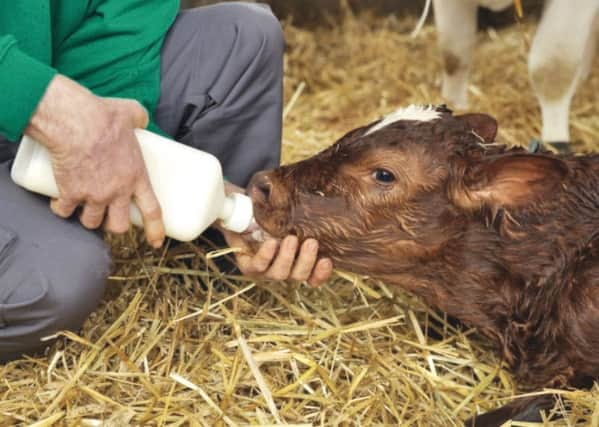The three Qs of feeding colostrum to young calves


With this in mind, the second part of our #calfhealth campaign is focusing on the importance of colostrum as it plays a vital role in providing antibodies to build immunity against enteric infections. It is also rich in essential nutrients that provide energy for growth and reduce calf mortality.
When it comes to the optimum use of colostrum, there are three important Qs to remember – Quickly, Quantity and Quality.
Advertisement
Advertisement
It is important that calves receive their first colostrum quickly after birth – ideally within two to six hours to optimise immunity as a calf’s efficiency of antibody absorption from colostrum declines rapidly from 40% at birth to less than 5% within the first 20 hours of life.
The recommended quantity is three litres or 10% of body weight within the first six hours, split into two feeds if necessary.
This should be followed up by another similar size feed within 12 hours of birth. Ideally calves should receive colostrum through a bottle or tube as the volume of colostrum consumed can be measured and calves left to suckle their dam are 2.4 times more likely to receive insufficient antibodies.
It is also essential that the calf receives good quality colostrum that is not contaminated with any harmful bacteria.
Advertisement
Advertisement
To prevent contamination ensure that the equipment used to collect and feed the colostrum is sterile, know the disease status of your cows, do not collect colostrum from cows that are Johne’s positive or have dirty udders and avoid contaminating the colostrum yourself with dirty hands. Good quality colostrum contains at least 50g/l of immunoglobulins and any colostrum containing less than 20g/l should not be used. You can not tell the quality of colostrum simply by looking at it and best practise is to consider testing and pasteurising collected colostrum if possible.
Fresh colostrum should be fed to calves within one hour of collection or stored in 2/3lt jars to make defrosting easier. All stored colostrum should be labelled with the collection date and cow identity. Colostrum should be warmed to between 40–42°C. This allows for a slight cooling before it reaches the calf with the ideal feeding temperature being 38°C. Once warmed, use within 30 minutes and never thaw or reheat colostrum in a microwave as it will destroy the antibodies.
Calves do not make their own antibodies until they are 21 days old so it is vital to maintain high standards of cleanliness in the calf environment and provide sufficient feed and water.
In summary, when it comes to colostrum think of the 3 Qs. A calf should receive three litres (quantity) of colostrum that is of good quality ideally within the first two hours (quickly) after birth.